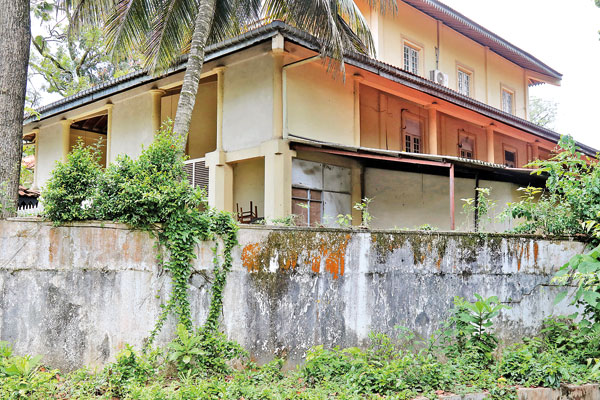Nearly 3,000 idle state buildings found across Sri Lanka
COLOMBO – Sri Lanka’s finance ministry has identified 2,972 state-owned buildings that are either half-built, unused, or underutilized, prompting the government to explore options to repurpose them for public use, Cabinet Spokesman Vijitha Herath announced on Thursday (28).
Speaking at the weekly Cabinet media briefing, Herath said that large sums of public funds had been invested in constructing these facilities, many of which remain unutilized or abandoned.
“A lot of public resources have gone into building these properties,” he said, adding that ministries have been instructed to determine whether they can use these facilities or hand them over to a common agency so they can be put to another purpose.
He also said that the finance ministry would conduct a comprehensive cost assessment to determine the total value of these properties and the level of expenditure already incurred.
According to the ministry’s findings, the Ministry of Education alone accounts for 436 of the unused buildings, while there are 301 community halls and 291 Seva Piyasa multipurpose buildings scattered across the country. Another 200 co-operative and Samurdhi buildings and 200 buildings owned by local government authorities were also identified as idle.
The list also includes 161official residences, 146 religious and welfare buildings, 69 health-related buildings, 89 warehouses or storehouses, and 77 buildings linked to road development projects. There are also 75 handloom-related facilities, 67 water project buildings, 24 vocational training centres, 21 buildings belonging to the Mahaweli Authority, 11 tourism-related buildings, 10 cultural centres, and six court offices. In addition, 726 other state-owned buildings have been classified as either underutilized or abandoned.
It is not yet clear when many of these structures were built, but the finance ministry’s ongoing audit aims to establish the construction timelines, identify responsible agencies, and assess potential for reuse.
Officials said that the government’s goal is to improve efficiency in public asset management, reduce waste, and ensure better returns on taxpayer-funded infrastructure. Repurposing or leasing some of these buildings could also help ease fiscal pressures and generate revenue at a time when Sri Lanka is working to stabilize its economy and improve public service delivery.
“We must make sure every rupee invested by taxpayers is put to meaningful use,” a senior finance ministry official said, adding that the government intends to present a detailed report on the findings to the Cabinet in the coming weeks.
The discovery of nearly 3,000 idle or incomplete public buildings underscores deep-rooted issues in project planning, coordination, and accountability within government institutions and highlights the urgent need for stronger oversight in future public investment programs.
The findings also come at a time when Sri Lanka is implementing structural reforms under its International Monetary Fund (IMF) program, which emphasizes transparency, efficient public spending, and state-sector rationalization. Analysts say that identifying and redeploying idle public assets could play a crucial role in reducing fiscal waste and strengthening public sector governance, key conditions tied to the country’s ongoing economic recovery.
-ENCL



Comments are closed, but trackbacks and pingbacks are open.